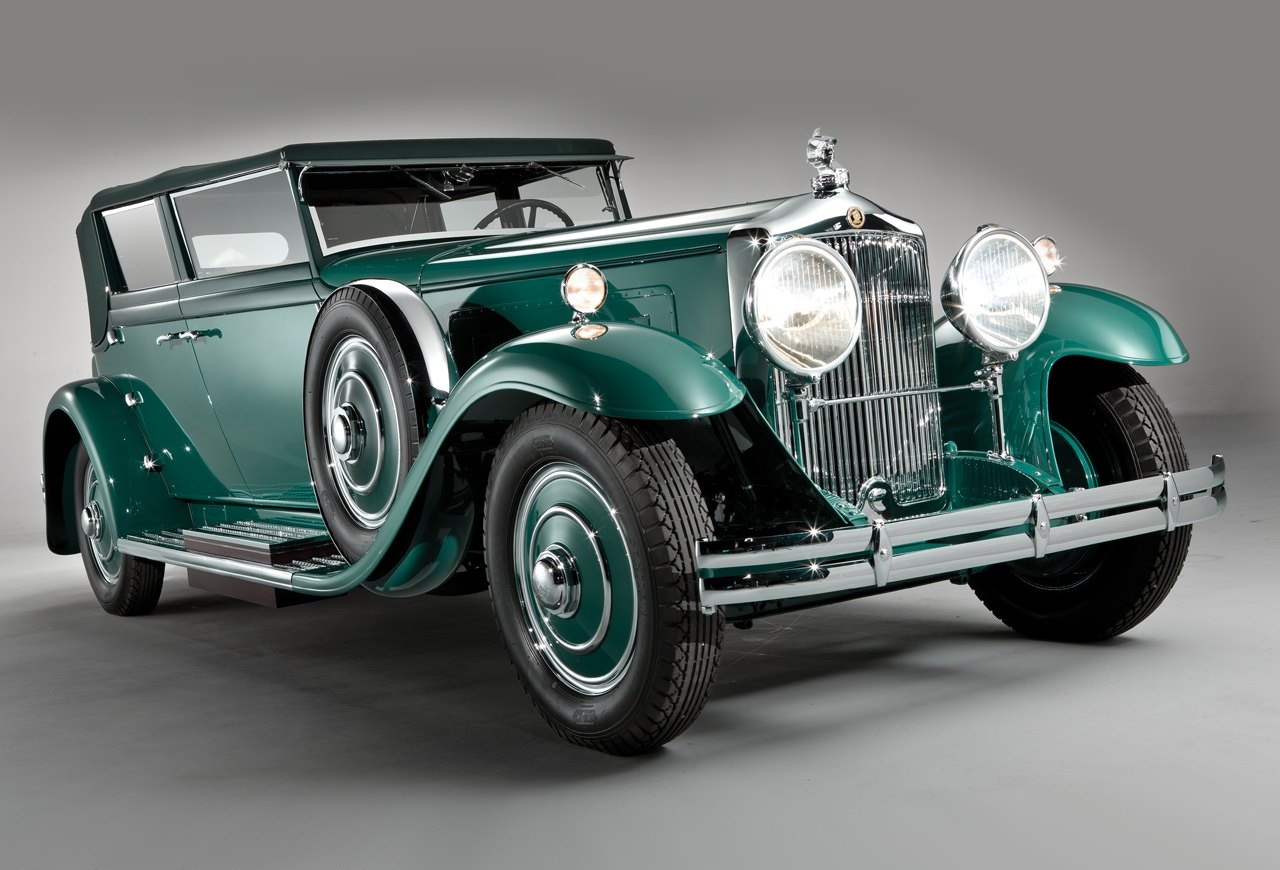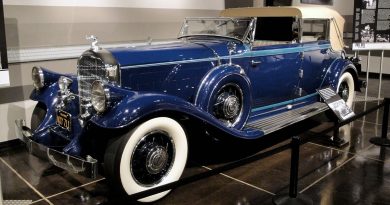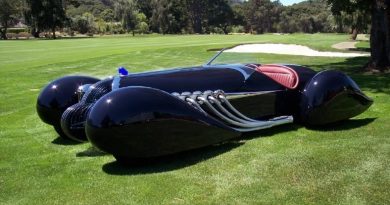1931 Minerva Model AL “Windswept” Convertible Sedan
One of the most striking automobiles of its generation, this Minerva is the result of pairing two of the finest manufacturers and coachbuilders at the very height of the coachbuilt era. Of course, there was another key factor in the creation of such a wildly designed automobile and that was a client willing to fund it. In this case that gentleman was Henry Walker Bagley, the son in law of R. J. Reynolds of the noted Tobacco Company.

Named after the classic Roman goddess of crafts, poetry and wisdom, Minerva was founded at the end of the nineteenth century in Antwerp, Belgium. Headed by Dutchman Sylvain de Jong, the company spent its early years repairing and building bicycles. In 1904 the focus shifted towards motor car production and shortly not much later it was the largest automobile manufacturer in the country. Within a few years the Belgian manufacturer had made quite a name for itself with the small and lightweight ‘Minervettes’ racing cars.

Despite the deteriorating conditions, Jacques de Jong persevered and in 1929 launched Minerva’s most luxurious model yet. Dubbed the AL, it was the manufacturer’s first eight cylinder engined machine. Needless to say, the new engine featured the Knight patented valve train. Like many of the other Minerva engines, it also featured a twin-spark ignition. Unusual for its time, the eight cylinder engine was cast in one block rather than being made up of two separate blocks of four cylinders. Breathing through a single Zenith Carburetor, and displacing just over 6.6 litres, the eight cylinder engine produced around 130 bhp.
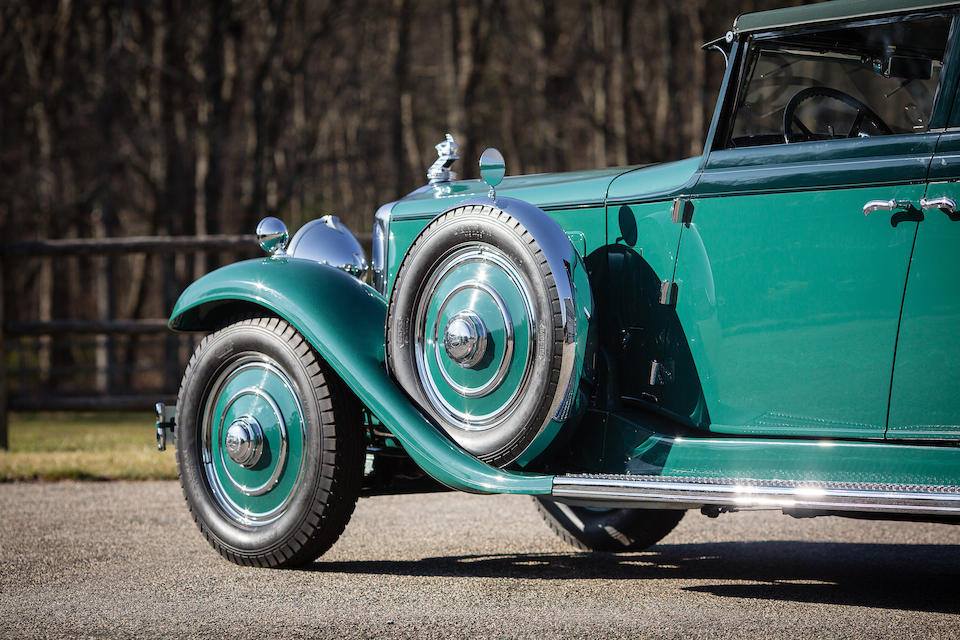
Rollston’s body for this silent motor car was, in many ways, a traditional convertible sedan, with elegant but dignified interior appointments and a fully insulated soft top, which made the car a formal sedan when it was raised and transformed it into an airy convertible when it was lowered.
What distinguished this car was that the doors were angled backwards at a dashing rake, and they were mounted on hinges carefully engineered to suit. This “slant door” design had been tried before by Hibbard & Darrin, of Paris, and Brewster, of Long Island, both on Rolls-Royce chassis. It was, in all likelihood, the Brewster “Windswept” Coupe, shown in New York in 1930, that inspired the Bagley Minerva’s design.
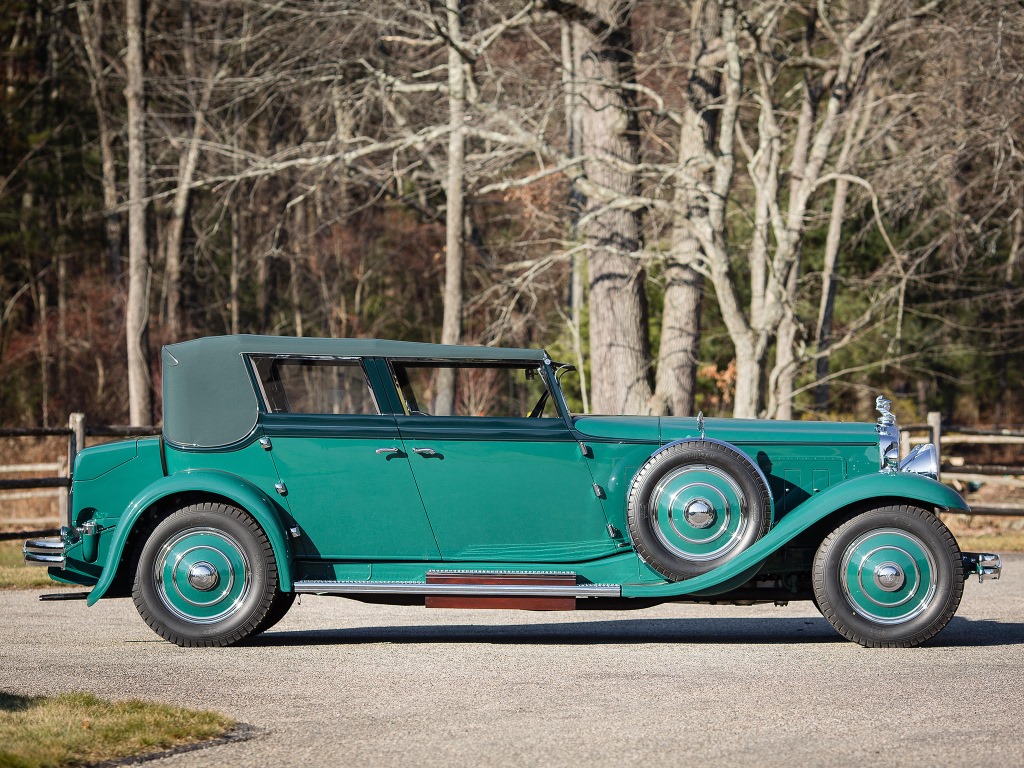
Rollston’s genius, however, was in improving upon the lines by matching the windshield, pillars, and even the shapes of the windows to the rake of the door lines. As with all great design, colors were used to guide the eye home, with a flow of darker paint along the beltline, accentuating how the design seems to be pushed rearward, by the force of its own drama. It is a cliché to say that a design makes a car “look fast when it is standing still.” In this case, the idea was not to make the car look fast; the idea was to accentuate the power suggested by its heft. Perfection is in the details, and even the Minerva mascot atop the radiator, a head that is mounted far back on an elegant neck, recalls the angles that define this car.
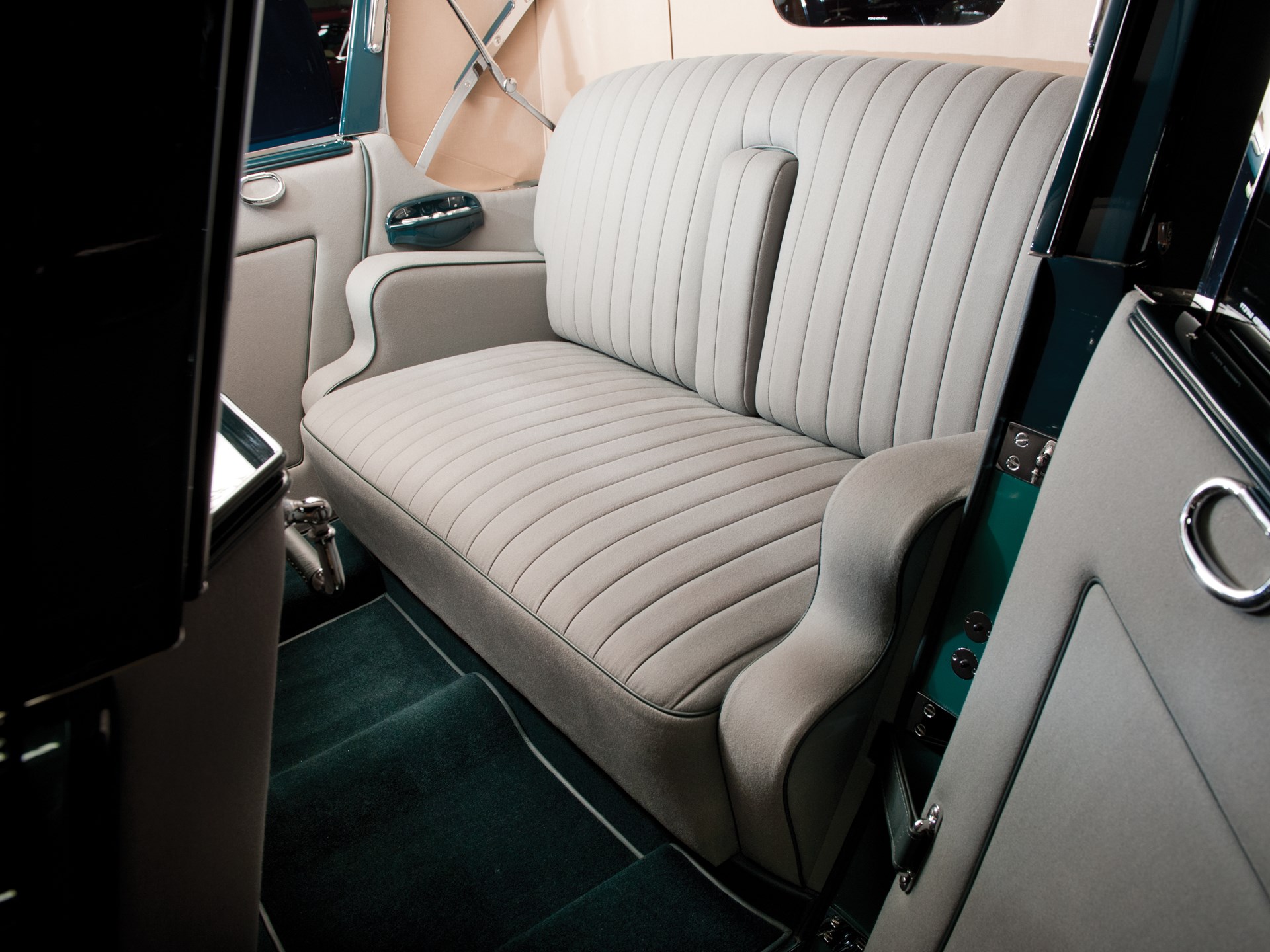
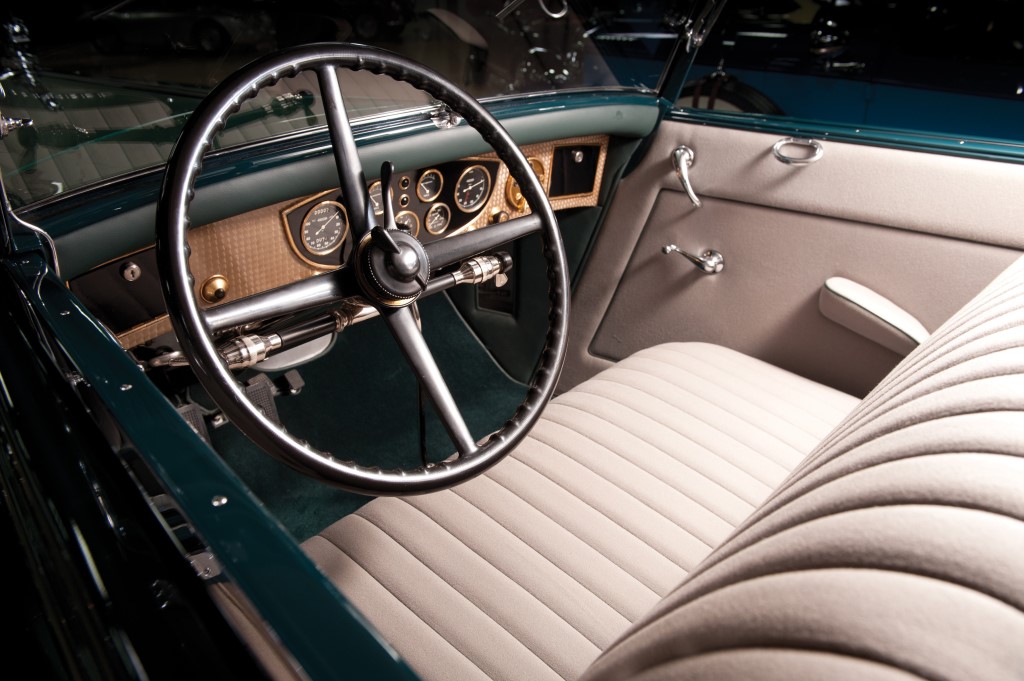
Sure to make an impression wherever it goes, as it was almost certainly intended to do from new, the Bagley Minerva Rollston Convertible Sedan is a truly unique and covetable automobile.
